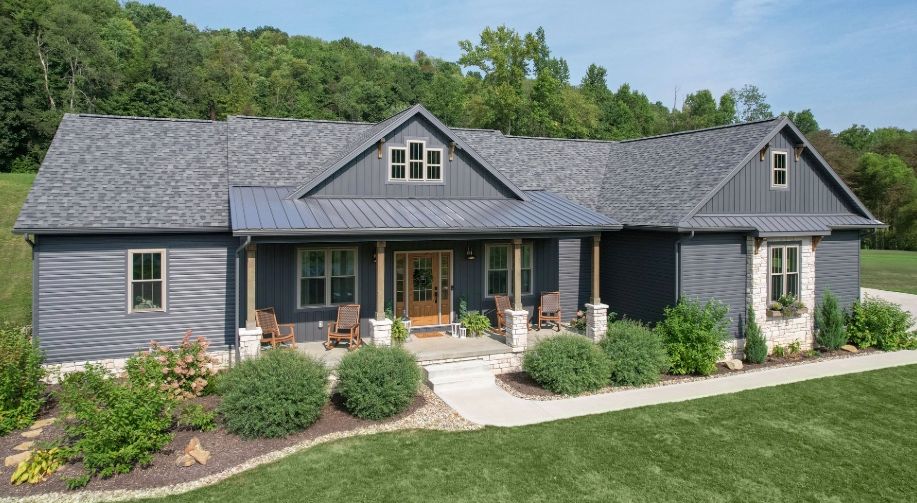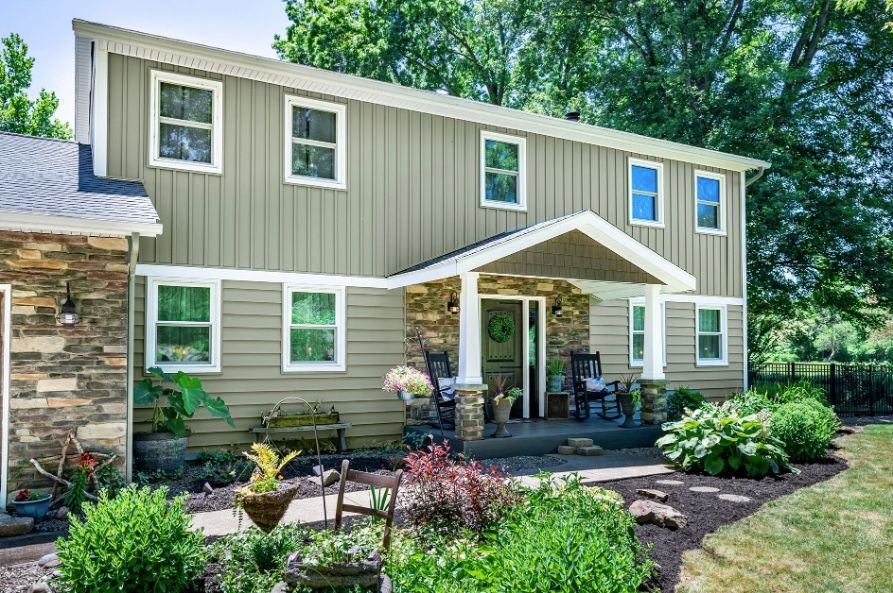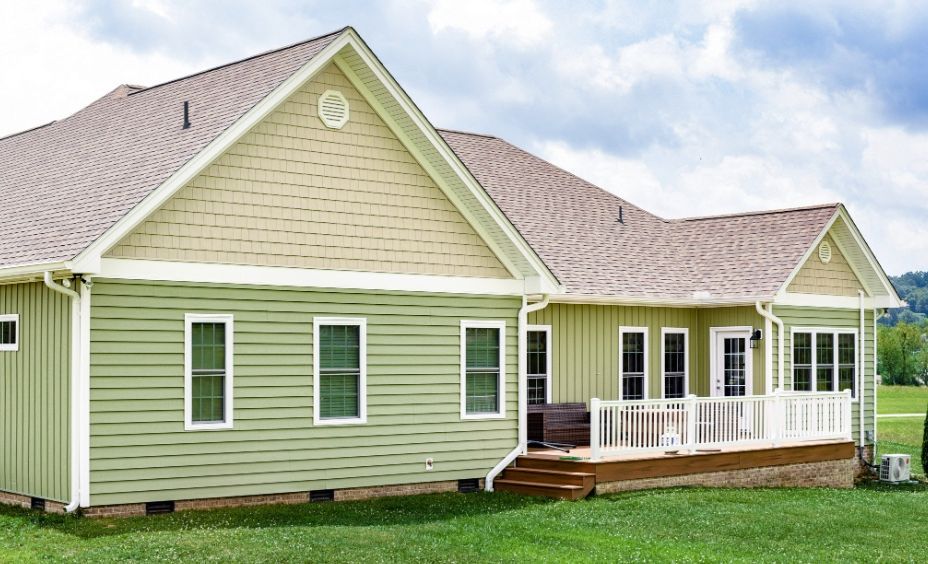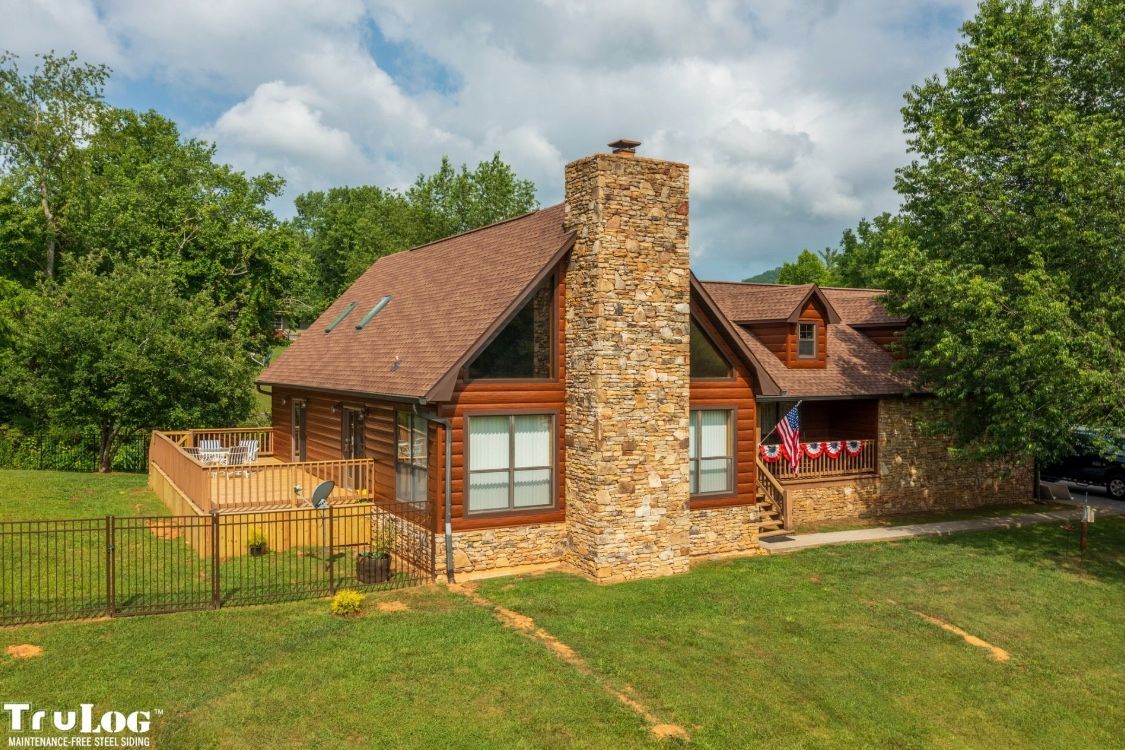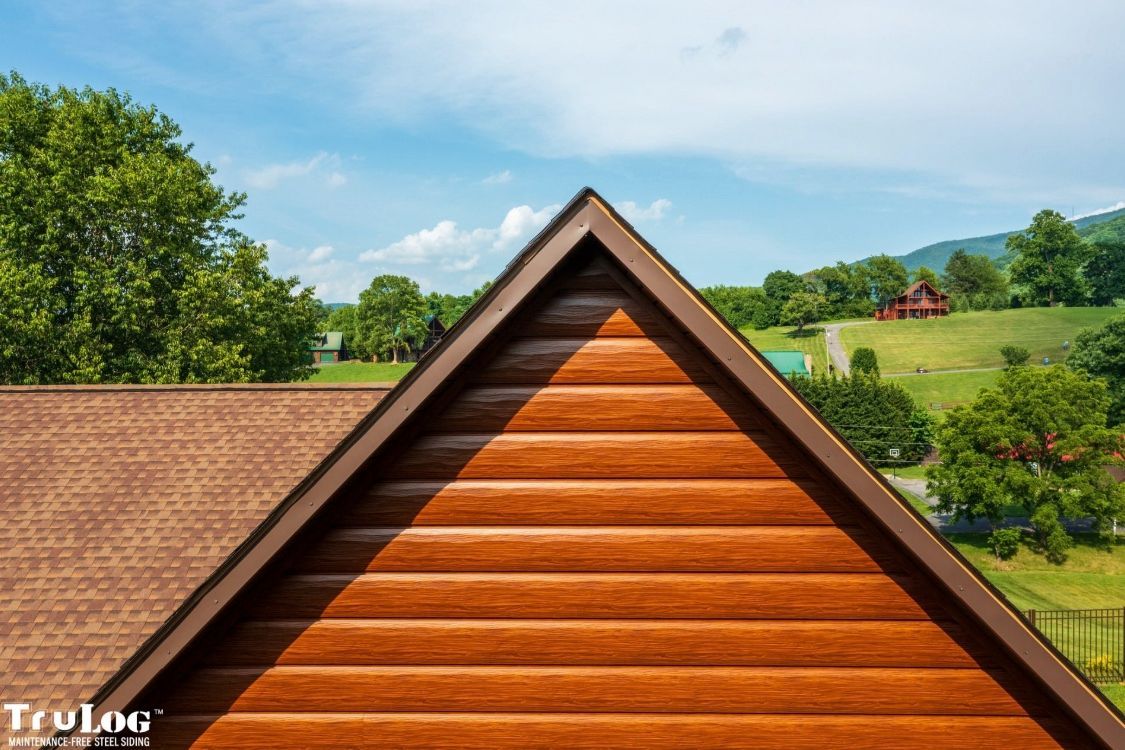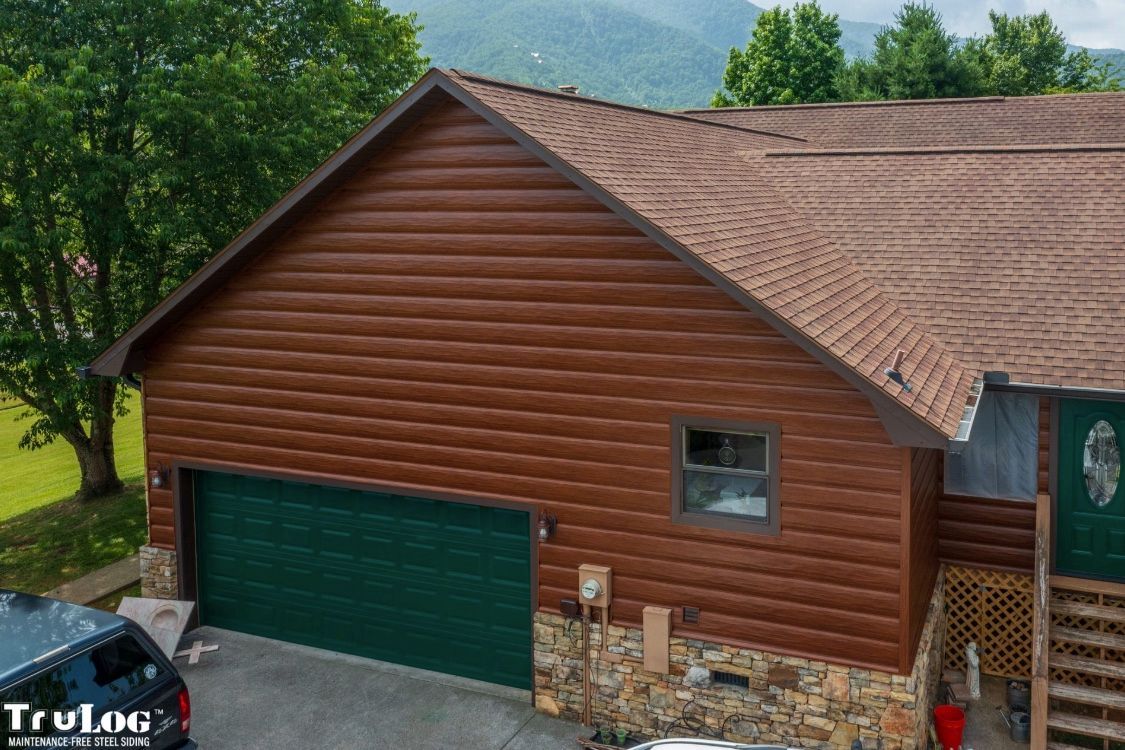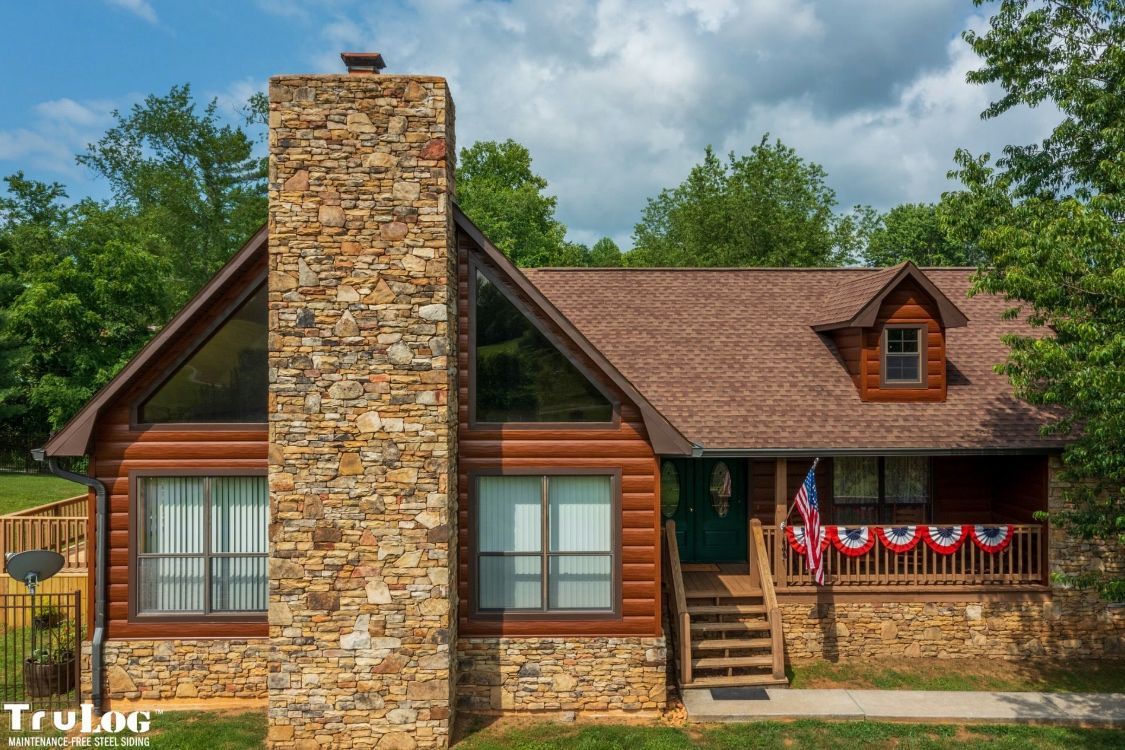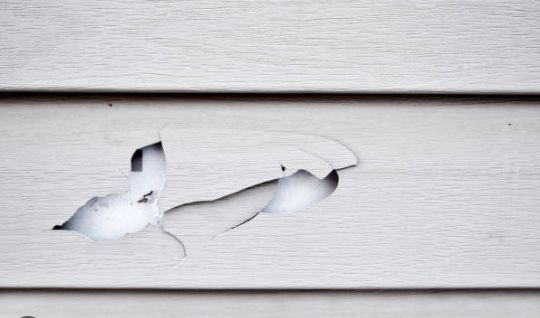
"We're a family business, and we treat you as family, too. We handle every request with the utmost care and professionalism".
About Morgantown Siding
30+ Years of Siding Knowledge
Founded in 1992, Morgantown Siding has been the trusted name in siding installation, siding replacement, and exterior remodeling throughout the Morgantown, WV area and beyond. Our mission from day one has been simple: to deliver high-quality siding services with craftsmanship you can see and customer service you can feel.
-
We specialize in a wide range of premium siding
solutions including:
-
- Vinyl Siding
- Fiber Cement Siding (James Hardie Style Siding)
- Engineered Wood Siding
- Metal Siding
- Aluminum Siding
- Composite Siding
- Cedar Shake Siding
- Board and Batten Siding
- Insulated Siding
- Lap Siding
- Vertical Siding
- Custom Siding Designs & Color Matching
- -
Whether you're upgrading your home's exterior, improving energy efficiency, or increasing curb appeal, Morgantown Siding delivers durable, weather-resistant siding options designed to protect and transform your home or business.
Why Choose Morgantown Siding?
We treat every project like it’s our own — with precision, care, and attention to detail. Our team is fully licensed, insured, and committed to exceeding industry standards in safety, cleanliness, and workmanship.
At Morgantown Siding, we believe great service is just as important as great siding. From your first consultation to final inspection, we go above and beyond to make sure you’re informed, confident, and completely satisfied with your investment.
-
✔ Over 30 Years of Experience
✔ Locally Owned & Operated
✔ Free On-Site Estimates
✔ 5-Star Rated Customer Service
✔ Quality Materials from Top Brands
✔ Honest Pricing – No Surprises
✔ Respect for Your Time & Property
-
Looking for reliable siding contractors near you? Contact Morgantown Siding today for a free quote and discover why homeowners and businesses across the region trust us with their exterior remodeling needs.
What to Know About Replacing Your Siding, And When to Do It
Siding does more than just give your home a clean, finished look—it’s your first line of defense against the elements. Over time, even the best siding materials wear down due to weather, moisture, pests, and age. Knowing when to replace your siding can save you from expensive structural repairs, reduce your energy bills, and boost curb appeal.
At Morgantown Siding, we believe homeowners should feel confident and informed when making decisions about their siding. Here’s what to keep in mind:
You should consider siding replacement if you notice:
- Warping, cracking, or loose panels
- Faded color or peeling paint
- Mold, mildew, or rot
- High heating/cooling bills (due to poor insulation)
- Water damage or moisture inside your walls
- Frequent need for repairs or repainting
Most siding lasts 20–40 years, depending on the material and local climate. If your siding is near the end of its lifespan, a professional inspection can help you determine whether full replacement is needed.
Know the Different Options Available For Your Siding Needs!
Vinyl Siding
Made from durable PVC (polyvinyl chloride), vinyl siding is one of the most common and affordable options for homeowners.
Pros:
- Low cost
- Low maintenance
- Resistant to rot and pests
- Wide range of colors and style
Cons:
- Can crack or fade over time
- Less eco-friendly
- May warp in extreme heat
Fiber Cement Siding
(James Hardie Style)
A mixture of cement, sand, and cellulose fibers, fiber cement mimics the look of wood or masonry with greater durability.
Pros:
- Extremely durable and long-lasting
- Fire- and insect-resistant
- Low maintenance
Cons:
- Heavier and more labor-intensive to install
- Higher upfront cost than vinyl
Wood Siding
Traditional and timeless, wood siding offers natural beauty and is available in styles like clapboard, shakes, and shingles.
Pros:
- Natural aesthetic and curb appeal
- Easy to paint or stain in custom colors
- Eco-friendly when sustainably source
Cons:
- Requires frequent maintenance (painting, sealing)
- Vulnerable to rot, pests, and fire
Engineered Wood Siding
Made from composite wood materials and resins, engineered wood gives the look of real wood with added durability.
Pros:
- More affordable than natural wood
- Resistant to moisture and insects
- Lightweight and easier to install
Cons:
- Still requires some maintenance
- Can be prone to water damage if not properly sealed
Woodgrain Steel Log Siding
TruLog steel log siding product offers the look of a rustic log home while providing maximum durability and easy upkeep.
For a log home without the maintenance, consider a more reliable siding material. Steel log siding by TruLog has a genuine wood appearance. However, it requires no care other than an occasional rinse with the garden hose.
Why Choose TruLog?
Durable, maintenance-free, US-sourced steel siding with a
realistic log look and texture for enhanced curb appeal.
Visible Signs of Damage
Cracks, gaps, or holes: Small cracks can allow moisture and pests to get behind the siding. If the damage is extensive, a full replacement may be necessary.
Warping or buckling: Siding that looks wavy, bent, or pulled away from the wall is a major sign of trapped moisture or improper installation. For vinyl siding, extreme heat can also cause warping.
Rotting or soft spots: This is particularly common with wood siding. Use a screwdriver to gently tap or push on the material. If it feels soft or crumbles easily, the wood underneath is likely rotting.
Bubbling or blistering: Bubbles on the surface of your siding indicate that water is trapped beneath it. This is a clear sign that the siding is no longer effective.
Pest damage: Holes or other signs of infestation from pests like woodpeckers or termites can compromise your siding's structural integrity.
Moisture, Mold and Cosmetic Issues
Why You Should Treat Mold On Siding Immediately
Health consequences. Structural and property damage. Poor indoor air quality. Spreads quickly
Health Consequences
For those with weakened immune systems or chronic lung disease, mold can lead to more serious lung infections.
Allergic reactions: Exposure to mold spores can cause hay fever-type symptoms like sneezing, a runny nose, and red, itchy eyes.
Respiratory issues: Mold can trigger asthma attacks in sensitive people and cause coughing and wheezing.
Irritation: Even for people without allergies, mold exposure can irritate the eyes, skin, nose, throat, and lungs.
Spreads Quickly
Mold can begin to grow within 24 to 48 hours of a water event.
Trying to remove mold yourself can cause spores to become airborne and spread to unaffected areas, worsening the infestation. If you suspect a mold problem, especially a large one, it's safest to contact a professional for assessment and remediation.
Poor indoor air quality
Airborne spores: As mold grows, it releases more spores into the air, reducing indoor air quality and increasing health risks for everyone in the home.
Lingering odors: Mold produces a distinct musty odor that can permeate a home. Removing the mold promptly also helps eliminate these unpleasant smells.
Structural and Property Damage
Degrades building materials: Mold feeds on organic materials, gradually breaking them down. Left unchecked, it can weaken wood, drywall, and other structures.
Causes costly repairs: The longer mold grows, the more extensive and expensive the damage becomes.
What starts as a small issue can escalate into needing to replace large sections of walls, ceilings, or flooring.
Reduces property value: The presence of mold and the stigma associated with it can significantly decrease a property's market value.
Health Warning: Exposure to Mold
If you’ve been in direct contact with mold—especially in enclosed or poorly ventilated areas—you may be at risk for health issues. Mold exposure can cause allergic reactions, respiratory problems, skin irritation, and in some cases, serious infections, particularly for individuals with weakened immune systems, asthma, or mold allergies.
If you are experiencing symptoms such as:
- Persistent coughing or wheezing
- Eye, nose, or throat irritation
- Skin rashes
- Shortness of breath or sinus congestion
You should seek medical attention and avoid further exposure immediately.



